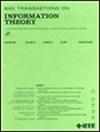Periodic Gaussian Process Controlled B-Spline for Scalable Modeling of Irregularly Spaced Signals
IF 2.9
3区 计算机科学
Q3 COMPUTER SCIENCE, INFORMATION SYSTEMS
引用次数: 0
Abstract
Existing periodic Gaussian process (PGP) modeling methods rely on the regularly-spaced-signal assumption (i.e., signals are evenly spaced) and the integer-period assumption for the sake of computational feasibility. However, such an assumption prevents conventional efficient modeling approaches from working properly on irregularly (unevenly) spaced signals, such as evenly spaced signals with missing data. Moreover, without the integer-period assumption, it is computationally prohibitive to accurately search the decimal period of PGP due to the severe non-convexity of its likelihood function. To address these issues, this study proposes a PGP-controlled B-spline for scalable modeling of irregularly spaced signals with a decimal period. The proposed model integrates PGP with B-spline basis functions, allowing for nonlinear and nonparametric modeling of periodic signals. An explore-exploit optimization is developed to overcome the non-convexity of the likelihood, enabling effective and efficient decimal period estimation. The proposed PGP modeling approach has a linear time complexity. Asymptotic properties of the proposed method are studied, which shed light on the period estimation of other PGP models. Simulation and real case studies are conducted to demonstrate the superiority of the proposed method.周期高斯过程控制b样条用于不规则间隔信号的可扩展建模
现有的周期高斯过程(PGP)建模方法基于信号间隔规则假设(即信号间隔均匀)和整周期假设,考虑到计算可行性。然而,这样的假设阻碍了传统的高效建模方法在不规则(不均匀)间隔信号上的正常工作,例如具有缺失数据的均匀间隔信号。此外,如果没有整数周期假设,由于其似然函数的严重非凸性,在计算上难以精确搜索PGP的十进制周期。为了解决这些问题,本研究提出了一种pgp控制的b样条,用于具有十进制周期的不规则间隔信号的可扩展建模。该模型将PGP与b样条基函数相结合,允许对周期信号进行非线性和非参数建模。为了克服似然的非凸性,提出了一种探索-利用优化方法,实现了有效的十进制周期估计。所提出的PGP建模方法具有线性时间复杂度。研究了该方法的渐近性质,为其他PGP模型的周期估计提供了参考。仿真和实际案例验证了该方法的优越性。
本文章由计算机程序翻译,如有差异,请以英文原文为准。
求助全文
约1分钟内获得全文
求助全文
来源期刊

IEEE Transactions on Information Theory
工程技术-工程:电子与电气
CiteScore
5.70
自引率
20.00%
发文量
514
审稿时长
12 months
期刊介绍:
The IEEE Transactions on Information Theory is a journal that publishes theoretical and experimental papers concerned with the transmission, processing, and utilization of information. The boundaries of acceptable subject matter are intentionally not sharply delimited. Rather, it is hoped that as the focus of research activity changes, a flexible policy will permit this Transactions to follow suit. Current appropriate topics are best reflected by recent Tables of Contents; they are summarized in the titles of editorial areas that appear on the inside front cover.
 求助内容:
求助内容: 应助结果提醒方式:
应助结果提醒方式:


